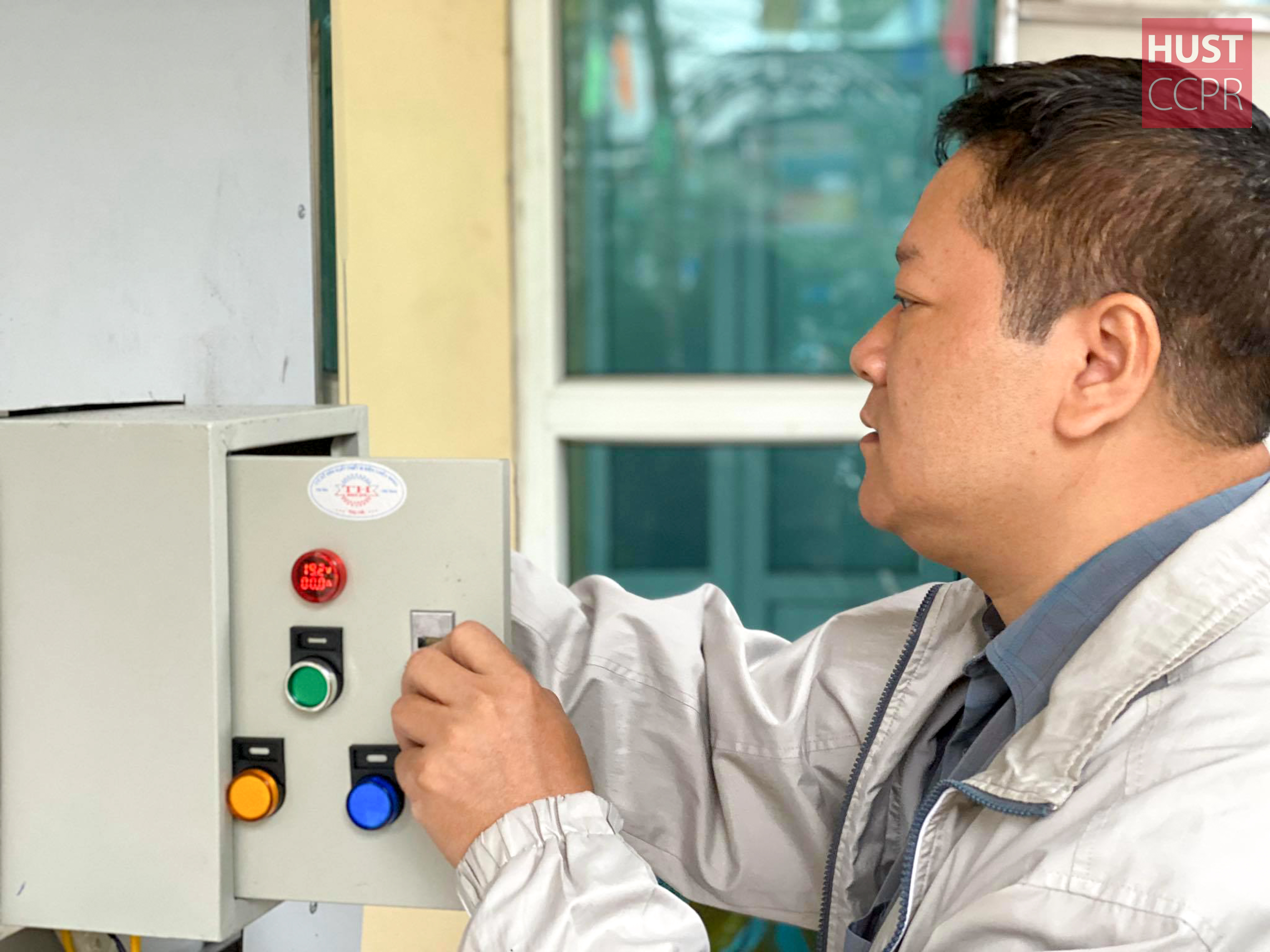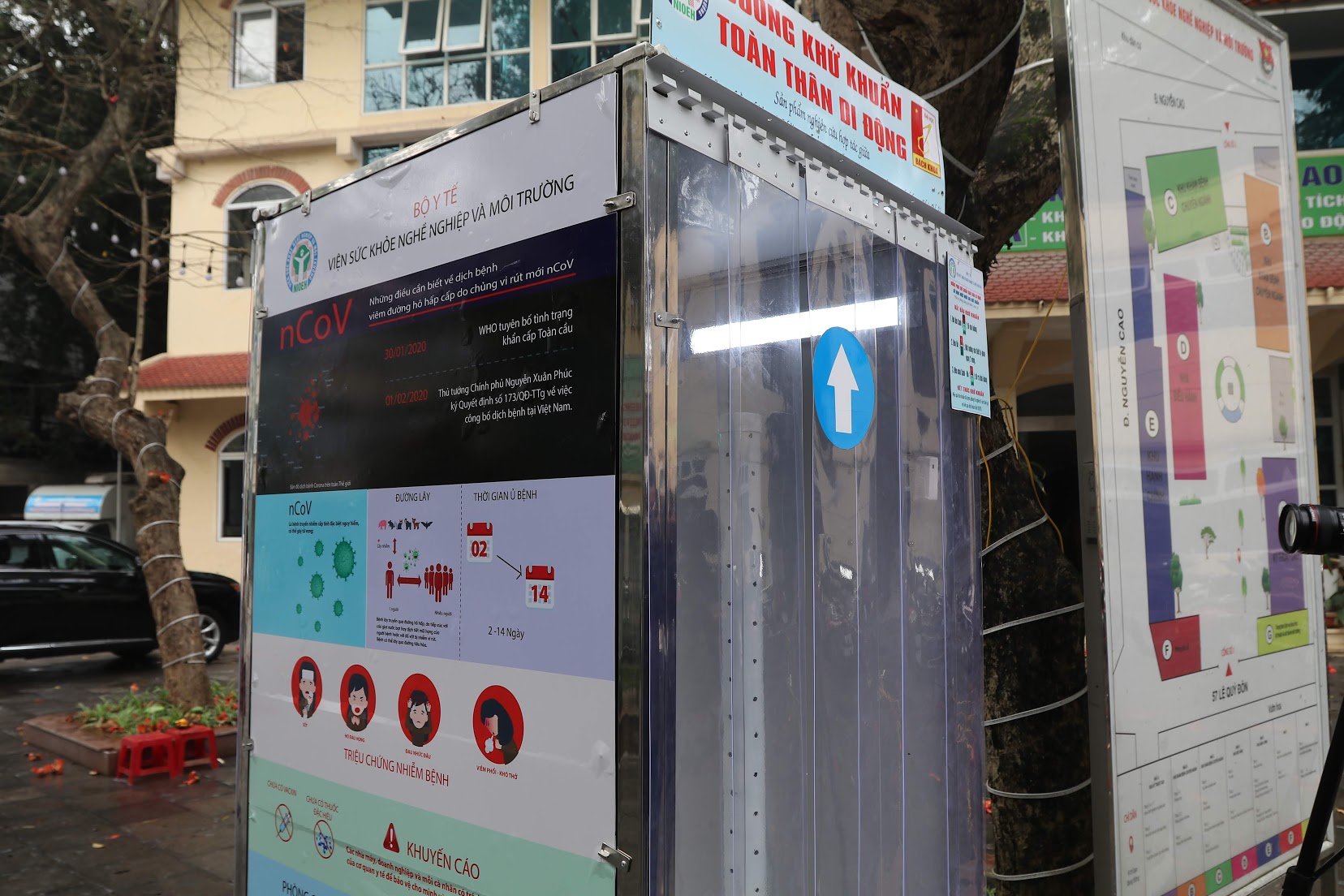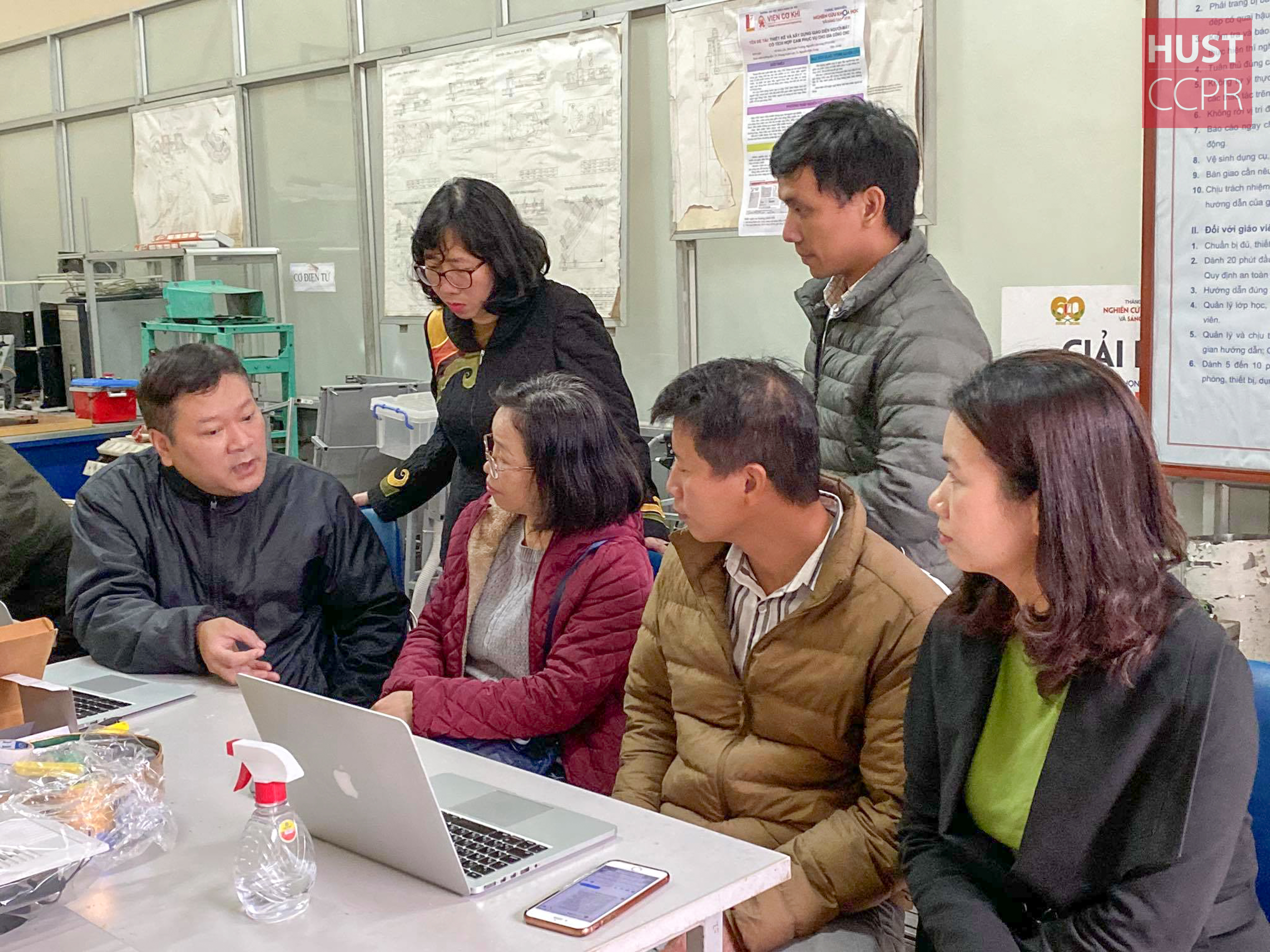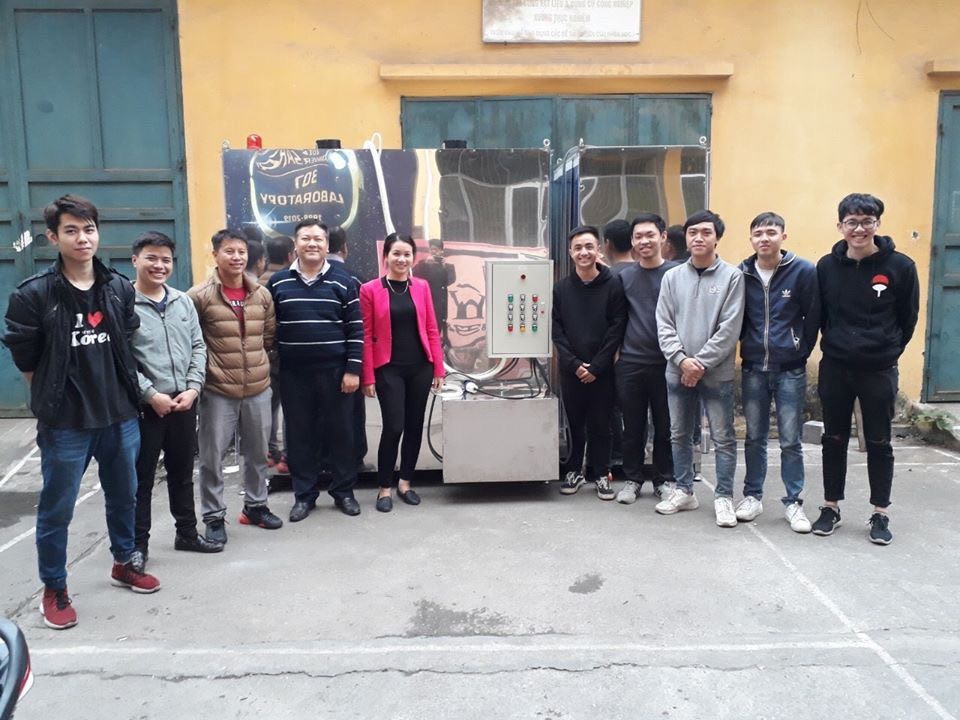The first mobile disinfection chamber in Vietnam
- Tuesday - 17/03/2020 17:34
- Close page
The research group of Hanoi University of Science and Technology in collaboration with the National Institute of Occupational and Environment Health (Ministry of Health) in designing and manufacturing a mobile disinfection chamber. HUST researchers are taking great effort every day in technological research, turning ideas and innovation into reality to contribute to our society.
At the beginning of February 2020, when the Covid-19 epidemic in Vietnam become complicated, the idea of a mobile disinfection chamber that is capable of integrating the disinfection technologies has been rekindled among scientists of the Institute of Occupational Health and Environment (NOIEH, Ministry of Health). This is when collaboration between the Institute of Occupational Health and Environment and Hanoi University of Science and Technology, the university with various fields and strong experts in technology, was formed and promoted. NOIEH immediately contacted the experts at Hanoi University of Science and Technology to solve the technical problem which prevents the idea to become a real product. A research group was founded by Dr. Nguyen Thanh Nhan which includes the faculty from the School of Mechanical Engineering, the School of Mechanical Engineering, the School of Environmental Science and Technology, and the School of Engineering Physics at HUST.

Ph.D. Nguyen Thanh Nhan - Head of HUST's research group
After a short time of discussion, calculation and design with the efforts of the whole team, a prototype of the mobile disinfection chamber that has a compact size was officially "born" with helpful works of newly fresh graduated engineers and the students at HUST. The chamber integrates various disinfection techniques under the guidelines of the Ministry of Health on disinfection procedures. The disinfecting process focuses on bacteria on the surface such as clothing, shoes, hair, faces or carry-on items to reduce the risk of bacterial exposure.
According to Assoc. Prof. Dr. Doan Ngoc Hai, the Director of the NOIEH, over 90% of bacteria and viruses on the surface of clothes, bodies and other human objects are completely removed after only 30 seconds in the mobile disinfection chamber. The test has been conducted by NOIEH under the guidelines for infection control and Decision 120/QD-BYT (dated January 24, 2000) of the Minister of Health on promulgating the process of testing chemical preparations, insecticidal and germicidal products in household and medical fields. Accordingly, the mobile disinfection chamber is rated at an average level and evaluated on gram (+), gram (-) and common bacteria at the rate of 99%. The modular design of the system allows for easy transportation and installation and increasing applicability.

Mobile disinfection chamber with the modular design
Assoc. Prof. Hoang Thi Thu Huong, a member of the research team, proudly talked about the achievement of the research group: With the prototyping model of the mobile disinfection chamber, HUST’s scientists have determined the working condition of the system in term of microclimate conditions, average ozone concentration in the chamber, misting mode, and operating time. The structured design, compact dimension, and operating procedures of the chambers ensure the effectiveness of disinfection techniques used. Besides, the control process of the system operation also performed synchronously.
According to Mr. Le Cao Cuong - a member of the research group, there are still improvements, especially technological ones, that could be done to create and maintain the stability of ozone concentration and distribution in the chamber. In the coming time, the group will continue in-depth research on technical improvement such as automatic control in combination with other techniques that HUST is currently mastering to get a better version.

The research group from Hanoi University of Science and Technology
The disinfection chamber system is applied to kill bacteria in any potentially contaminated area. Therefore, it can be used in places that require disinfection such as hospitals, quarantine areas, manufacturing enterprises with clean requirements such as food processing, pharmaceuticals. Currently, two disinfection chambers are being installed at the Institute of Occupational and Environmental Health for testing.
Not only working in research groups and applying interdisciplinary research, but lecturers also inspire students, the younger generation in scientific research and community service. Alumnus Luong Van Luan – a student at Mechatronics Program, K60 - excitedly shared: "Just having graduated one semester early, I was invited to join in the manufacturing team with other final year students. Under the guidance of the teachers, we had applied the knowledge and practice skills learned in the school to design and successfully manufacture a prototype of the system in the first version. Working on the chamber days and nights, we had discussed to improve system performance to ensure the system operated more reliably and efficiently with a better design and control system”.

School of Mechanical Engineering's researchers and students on the first days of the product manufacture. Photo: School of Mechanical Engineering
At present, the mobile disinfection chamber has been transferred to the Institute of Occupational and Environmental Health. The NIOEH will be responsible for coordinating with the businesses to turn the prototyping model into commercialized products with valid certificates as well as licenses for the use in the health sector. The business's production will offer good products at reasonable prices to serve the community faster and more efficiently.
Research team expert, Ph.D. Nguyen Kien Trung noted: Although the system has been designed to operate automatically, the chamber still needs to be monitored during operation by a person that also can guide, monitor and instruct the users following the right process. Therefore, the system is not recommended for household purposes. Small communities also require the training process.
With HUST’s contribution to the project, this is a strong statement showing HUST being on the right track to fulfill its mission, which is to serve our country and global society via scientific research, technological innovation, and knowledge transfer.
“This is a prototype model developed based on the innovation at HUST to bring useful products to the community. HUST will keep going to conduct in-depth studies to improve the system, be ready to accompany the Units and Departments of the Ministry of Health in the field of the disease prevention and control in the future”- Ph.D. Nguyen Thanh Nhan - Head of the research group.